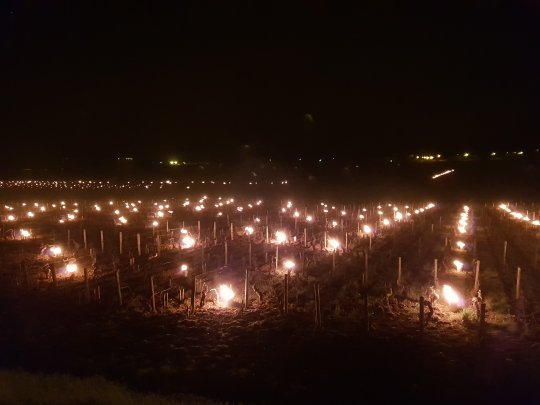Indirect methods
Indirect methods applied well in advance of frost risks, sometimes as early as planting, are likely to be the most economical and effective. These measures include:
-
Plot selection: planting vines in frosty areas, especially in hollows or valleys where cold air collects and stagnates, is to be avoided. The presence of compact hedges or strips of woodland can increase the risk of frost by preventing the flow of cold air. However, surrounding vegetation can also sometimes reduce the risk of frost, depending on its position in relation to the plot. Choosing a well-drained plot or carrying out drainage work can also help reduce the risk of frost.
-
Cultivation and agronomic practices: to combat spring frosts, late budding vines can be planted and the height of the vines can be raised. Grassed plots should be mown before budburst. Late pruning can delay budburst. It is possible to gain up to a week by pruning in March instead of November. There is an old saying, "taille tôt, taille tard. Rien ne vaut la taille de Mars" ("Prune early or late. Nothing beats pruning in March"). It is also possible to delay the folding and attachment of canes which have been pruned long, the acrotonic principle then delays the opening of the base buds which will then be protected in the event of frost.



